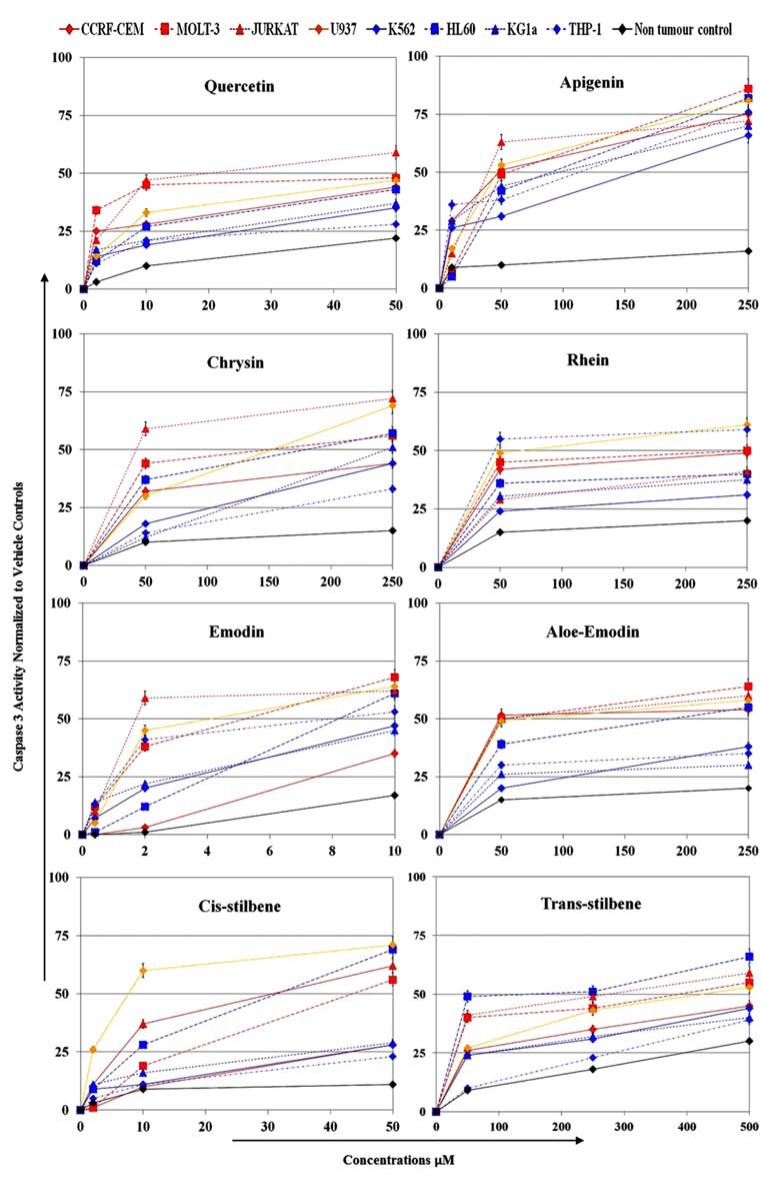Fig. (3).
Effect of eight polyphenols (quercetin, apigenin, chrysin, rhein, emodin, aloe-emodin, two cis-stilbene and trans-stilbene) on apoptosis of three lymphoid leukemia (CCRF-CEM, MOLT-3, and JURKAT; red lines), one histocytic lymphoma (U937; orange lines), four human myeloid leukemia cell lines (K562, HL-60, KG-1a , THP-1; blue lines) and the non-tumor normal progenitor cells (CD34+; black line). Apoptosis was assessed using a caspase 3 activity assay and analyzed by flow cytometry. Cells were treated with range of concentrations for each polyphenol for 24 h and the range of IC25 and IC50 as determined by CellTiter-Glo® assay. The treatment concentrations for emodin were 0, 0.4, 2, 10, 50 µM, for quercetin and cis-stilbene were 0, 2, 10, 50 µM; and for apigenin, chrysin, aloe-emodin, rhein and trans-stilbene were 0, 10, 50, 250 µM. All data was normalized to the vehicle-only control, which was assigned a 0% apoptotic level. The data is expressed as mean ± STD (three independent experiments, each in triplicate). The statistical significance was determined by comparison with the vehicle control, statistical significant was set at p<0.05 and determined by one way ANOVA and Tukey post-hoc test. Statistical results are summarised in Table 5 which shows the lowest dose that induced significant inhibition compared to vehicle control. All concentrations above these points were also significant. The AP50 for each polyphenol in each cell line were determined and shown in Table 6.

